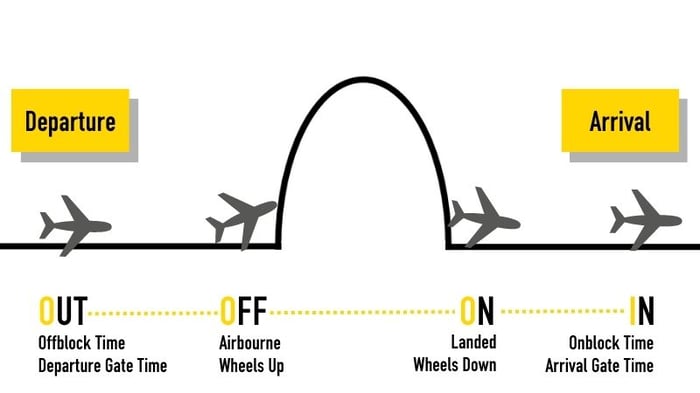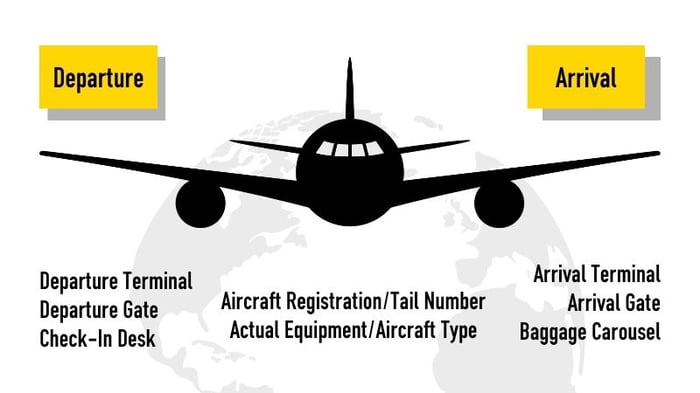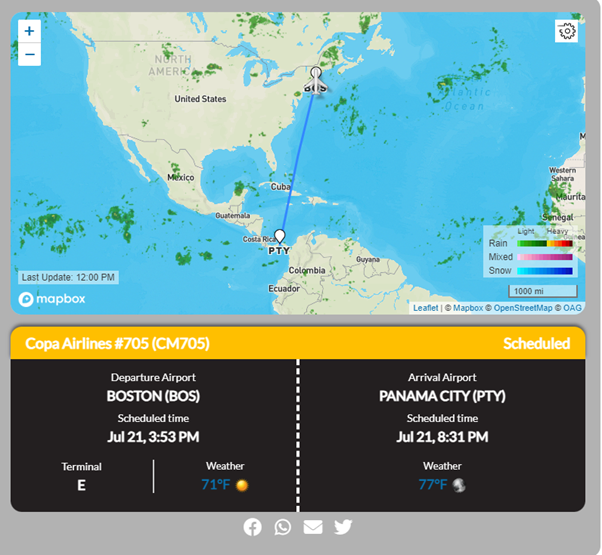Every day, millions of flights, cancellations, and flight status changes are tracked to keep the travel ecosystem moving.
Flight Status Data impacts all aspects of air travel. Whether it’s passenger experience, disruption management, operational improvement, onward travel services, or modelling aircraft utilisation for insurance and investment opportunities, businesses need to stay ahead of changes.
Now, thanks to the world’s most comprehensive and accurate global flight status data, alongside unique historical data dating back to 2004, they can. OAG’s data ensures that customers stay informed of critical risks and flight delays.
Key Points About Flight Status Data Covered in This Blog
- Flight status data underpins the passenger experience, disruption management, and daily airline operations.
- It captures both real-time and historical flight movements, with updates from multiple sources.
- Data quality depends on direct airline feeds, reliable validation, and consistent distribution practices.
- Accurate, timely status requires precise sources, up-to-date information, and strong coverage.
- Airlines, airports, and service providers use status data for operations, analytics, and resource allocation.
So, What is Flight Status Data?
Flight status data provides real-time flight information (FLIFO) updates/messages during a flight’s operational window.
This period typically can differ across systems, but at OAG, the operational window is defined as 52-hours before the scheduled departure time and 24-hours after the scheduled arrival time.
What Data Makes Up Flight Status?
Timed Data Updates – What is OOOI?

There are four timed data elements, known in the industry as OOOI times. Each time has a field for Estimated Time and Actual Time
Out Gate : Sometimes also referred to as ‘pushback’, this is the time where the aircraft starts to move and is pushed back from the boarding gate, ready to make its way to the runway.
Off Ground: Often referred to as ‘take-off’, this is when the aircraft is airborne, and the wheels are up.
On Ground: This refers to the time the plane lands on the ground.
In Gate: Also referred to as ‘on-block’ time, this is when the aircraft reaches the arrival gate.
Non-Timed Data Updates

There are 8 non-timed data elements OAG currently processes , some of which are known before the operational window (52hours) as they are filed when the carrier publishes the schedule. Some updates, like baggage carousel for example, are not available before the flight actually takes off. Some smaller airports with only a few carriers will often use the same arrival gate and this is therefore reflected in their updates as they know which gate the carrier is going to use.
Where Does Flight Status Data come from and what is it used for?
Airlines manage their own flight status information and use this internally or via their customer-facing app, but they also supply this information to relevant partners such as alliance members, interline participants, airports, and OAG to help manage passenger experience and operational performance.
Once status data is received by OAG from Airlines, it is distributed across the industry to a wide range of different stakeholders, including:
Airports: The Port Authority of NY & NJ, San Francisco International Airport, Los Angeles Airport, Beijing Airport.
Airlines: For use in their own online flight status/tracking widgets.
Airport Service Providers: Swissport, AvTech, Springshot, Allied Aviation, Total, QT Technologies, LSG Sky Chefs, GateGourmet, Pax Assist, Menzies
TravelTech: UberReserve, Cobotics-AI, OnTheBeach, Skyscanner
Flight status data can vary depending on the airline for a number of reasons:
• Some airlines might not update data feeds
• Some updates aren’t made in a timely manner
• People enter incorrect information
• Data providers can suffer system failures, impacting the quality of the data we receive.
• Technology stack
What is flight status data used for?
Status Data may be used across the industry for a wide range of different reasons, whether that’s informing travellers of a flight delay, or analysing the data to predict future delays. Most use cases fall into one of two categories: Analytical and Operational.
Analytical
Typically, historical status data is used to analyze flight time, delays, cancellations and more. This is sometimes put into predictive models to create predictions on potential delays or cancellations based on historical trends.
Operational
Real-time status updates are often used in an operational context, to provide information on what’s currently happening. For example, a baggage handling company may use status data to see what flights are departing/arriving when so that they can allocate resources efficiently and keep luggage moving and turnaround times at a minimum.
Quality matters - what does great flight status data look like?
Flight status data is extremely complex in both is composition and collation. Assessing and understanding quality is critical to any stakeholder or business given the real-time implication and impacts of any errors. Quantity is also a factor here, as in 2022 OAG processed nearly 2 billion status updates from carriers and flights across the globe.
There are 3 key ways to understand how fresh and accurate flight status is and the integrity of flight status data.
1) Source, formats & delivery/origin
The best quality flight status information comes directly from airline or its alliance partner. However as mentioned above, not all data from airlines is the same. Not every airline includes all flight data elements, some transmission methods (e.g MVT) are faster than others and data formats have different structures.
Therefore, when understanding flight status data, the origin of the data is critical. Data feeds sent directly from the airlines can be the most accurate, however most partners and stakeholders cannot ingest multiple direct feeds given their complexity and challenges explained above.
So, ensuring your data hasn’t travelled far, but in the best format via the method from its source, is key. Equally critical though is ensuring there is technology and capability in place to handle a clear hierarchy and precedence of secondary data sources to maintain integrity.
2) Accuracy
Flight status data has a baseline on which it is calculated and measure – airline schedules data. This is is a critical first crosscheck/match. Without an accurate ‘base schedule’ to match the updates the flight status information falls apart. It is essential to ensure the integrity of the airline schedules data being used.
Status updates should have a minimum the carrier code, flight number, date of operation to allow for the matching and they need to be accurate. Feeds need to be as close to real time (within 5 mins of event time), ideally latency should not be more than 15 mins. Minimum ‘entry’ or ‘acceptance’ requirements should be in place and consistent for example. Estimated and Actuals on at least one Departure and one Arrival Point, , Gates and Aircraft Registration are priority non timed data elements.
Given the complexity of the data, stringent quality checks are critical, and experience and domain expertise make an enormous difference.
3) Coverage
There are over 100,000 flights every day, flight status coverage needs to be tracked against comprehensive airline schedules data. Flight status data provided across a route, market, airline, alliance, city, region or country may only represent a fraction of the actual flights taking place if key airline schedules are missing, incomplete or inaccurate. OAG uses 80% as a minimum threshold when analysing OTP performance and ranking.
Given there are so many data elements in flight status, coverage can mean different things. Here are a couple of examples:
• Updates based on a minimum of least one timed update (Estimated or Actual OOOI) or status of flight is Cancelled
• Updates on either Out or Off AND On or In (Estimated or Actual OOOI) or status of flight is Cancelled
Understanding how coverage is defined will ensure a better understanding of the quality flight status data.
Understanding how coverage is defined will ensure a better understanding of the quality flight status data.
How Can Flight Status Data Be Accessed?
As previously mentioned, status data is sent to alliances, partners and integrators (like OAG) by airports and airlines to communicate and distribute to the travel ecosystem. In 2024, OAG processed on average 59 status updates per second. There are a variety of different data formats, and not each carrier is the same. Data can be in various different formats such as Movement Messages (MVTs), AIDX XML, ACARS and more, and transmitted to us in a number of different ways including SFTP, MQ and HTTP Post.







